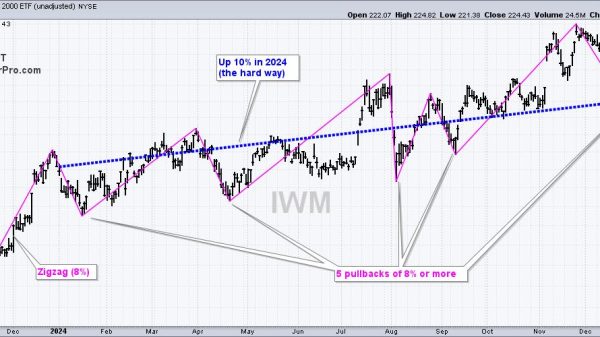Brian Chau
In general, the policy discussion around Artificial Intelligence (AI) underestimates the diversity and vulnerability of the AI startup ecosystem. The reality is often different than what policymakers think. Without understanding the startup ecosystem, the resulting policy could lead to unnecessary interventions into competitive markets that disrupt innovation in the free market.
So what might policymakers need to better understand about the current state of the AI startup ecosystem?
Policy analysis that focuses on the effects on industry leaders rather than on startups underestimates the damage done to AI development by harsher regulatory approaches, such as the Biden Executive Order on Artificial Intelligence. For example, the National Telecommunications and Information Administration (NTIA) is set to impose auditing and content regulation on “all stages of the value chain.” This means that instead of focusing narrowly on the areas where harms actually occur, the NTIA treats all AI developers as preemptively suspect.
Consequently, developers whose products have no risk of causing the harm the NTIA identifies are still forced to censor the output of their software, conduct time‐consuming audits, and be delayed by inefficient regulatory approval processes.
This regulation would make the experimentation process far more time‐consuming by increasing compliance costs, restricting what instructions AI models will respond to, and possibly harming the underlying efficacy of AI models. This results in more startups failing because they cannot acquire the capital to continue operating, there are longer timelines to complete research and development for the ones that persist, and there is a less effective end product. The NTIA’s proposed regulations would also have an anticompetitive effect, as they impose fixed costs that disproportionately affect smaller businesses with less time and capital to comply with them.
AI is often equated with its industry leaders, such as OpenAI, Anthropic, Google or Meta. However, just as assembling a car requires many suppliers and subcontractors, user‐end AI products often consist of many specialized layers. Examples include producing the hardware required to run AI models, curating specialized data used as an input to AI models, computer intensive pre‐training to produce a general language model such as GPT‑4, or fine‐tuning a general model to improve performance on a specific task. The following chart is a map of these categories, which captures the complicated and competitive landscapes of each AI sub‐industry.
Click here to see a larger image of the chart.
Competition is increasing on each of these layers as AI becomes a more well‐funded industry. As basic tools for every part of the AI pipeline become more widely available, startups can conduct thorough experiments on a narrower niche of the AI market.
Many startups will use a base model, such as OpenAI’s GPT‑4 or Meta’s Llama 3, as an input to their product. They experiment with a variety of base models, infrastructure, hardware, and optimization techniques to create the best product for their use case, leading to a complicated network of de‐facto suppliers and subcontractors. Just as software companies now rely on other software for web development, databases, networking, or cloud services, AI companies will rely on increasingly specialized vendors for different components of AI models.
This process of market specialization is best demonstrated by the practical experience of startups. Proemial AI is a company that narrows down GPT‑4, sacrificing generality to make it the best at doing one specific thing: communicating scientific papers. “We were just surprised at how bad [unmodified] GPT4 was, because we were constraining it in interesting ways,” said founder Geet Khosla. Scientists often struggle to anticipate what questions an ordinary user would have about their work. By being able to respond to a user’s questions and vary its depth of explanation based on the experience of each individual user, Proemial would be able to make scientific work more accessible.
While most AI models require expensive hardware to run, Haltia.AI is creating one that doesn’t. “We are taking the Mistral‐7B model and putting a [version] on the iPhone,” said Haltia.AI founder Arto Bendiken. This allows users to get an AI response much faster, at a lower cost, and even when they aren’t connected to the internet. This highlights the tradeoff between accuracy and convenience, which presents another opportunity for startups to compete.
Lastly, consider Superflows, a company that assembles a chain of Large Language Models (LLMs), ChatGPT, to explain a company’s software to a new programmer. “There’s a relatively long chain of prompts we use … get one LLM to describe endpoints … another LLM reads it,” said Superflows co‐founder Matthew Phillips. His company experiments with AI models, their own modified models, and ways of formatting user input. “There’s a process of evaluating which LLM has the best ratio of quality to speed.”
These extensive experiments on base models and techniques carried out by startups require flexibility to operate. The NTIA’s proposed regulations impede them in several ways that are particularly impactful on smaller businesses. The most obvious issue is compliance costs for auditing or content restrictions, which each company would have to adapt their end product to. This serves as a barrier to entry for new companies, which may not have the resources to comply.
The result of content restrictions on their base‐model suppliers would also make experimentation more difficult. Restrictions on model content can result in denying user requests that are not actually harmful. Overcoming these restrictions in non‐harmful use cases sacrifices crucial engineering hours. Finally, there is some evidence that the techniques used to achieve content restrictions can reduce the overall performance or flexibility of AI models.
Brian Chau is the executive director of Alliance for the Future. He is a former machine learning engineer and International Olympiad in Informatics gold medalist.























